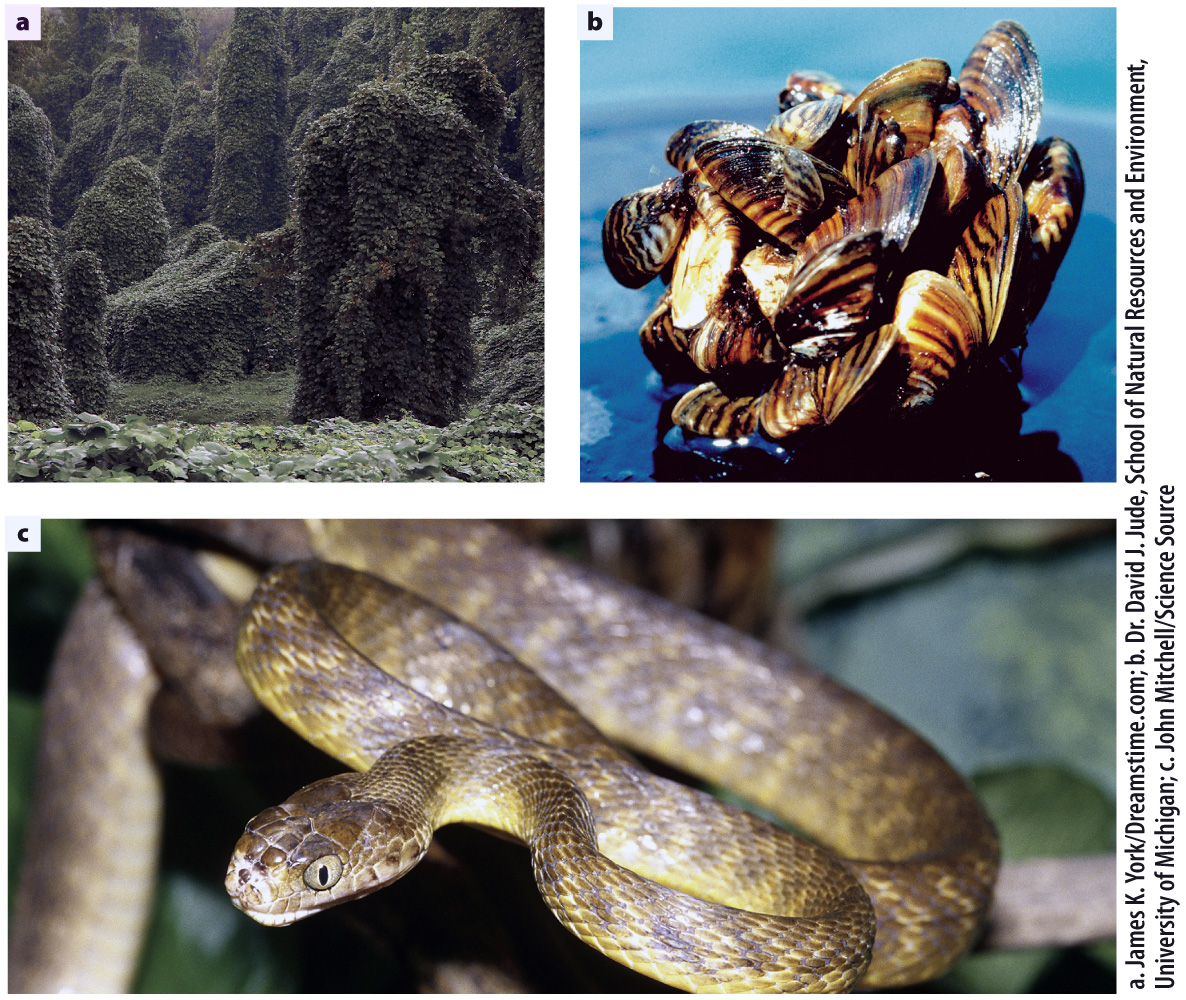Humans play an important role in the dispersal of species.
Biodiversity loss has many causes. In addition to habitat destruction and overexploitation, one of the most insidious is the introduction of non-
Species can sometimes be transported long distances by natural processes. For example, the Gulf Stream and North Atlantic Drift occasionally carry coconuts from the Caribbean to the coast of Ireland. Migratory birds can transport microorganisms across continents. In the Anthropocene Period, however, humans have dramatically increased dispersal. Ships fill their ballast tanks with seawater in Indonesia and empty it into Los Angeles Harbor, carrying organisms across the Pacific Ocean. Insects in fruit from South America wind up on a dock in London. Humans have become major agents of dispersal, adding new complexity to 21st-
It has been estimated that 49,000 non-

Kudzu, for example, a plant imported from Japan to retard soil erosion, now covers more than 3 million hectares in the southeastern United States, displacing native plants through competition for space and resources (Fig. 49.22a). The Zebra Mussel, a European bivalve that hitchhiked to the Great Lakes in the ballast water of cargo ships, has also multiplied dramatically in its new habitat, displacing native species and clogging intake pipes to power plants (Fig. 49.22b). Nearly 500 introduced plant species have become weeds, contributing disproportionately to crops lost each year to competition from invasive plants. And in Australia, more than 10% of all indigenous mammal species have become extinct in the past 200 years, largely because European colonists introduced cats and red foxes.
Invasive species have particularly devastating effects on islands because island species have commonly evolved with relatively few competitors or predators. Bones in Hawaiian lava caves record more than 40 bird species that existed 1000 years ago but are now extinct, eliminated by rats and pigs introduced by Polynesian colonists, as well as by landscape alteration. Introduced predators have had a similar impact on the island of Guam. Brown tree snakes introduced from Australasia since World War II have reduced native bird and reptile diversity by 75% (Fig. 49.22c).
Such introductions contribute to the changing diversity and ecology of 21st-
Quick Check 4 How do invasive species affect species diversity of communities and ecosystems?
Quick Check 4 Answer
Invasive species may outcompete native species for available resources, diminishing the population size and, in time, the diversity of native species. Introduced animals may prey on native species, reducing their numbers. Or introduced species may simply increase local species diversity.